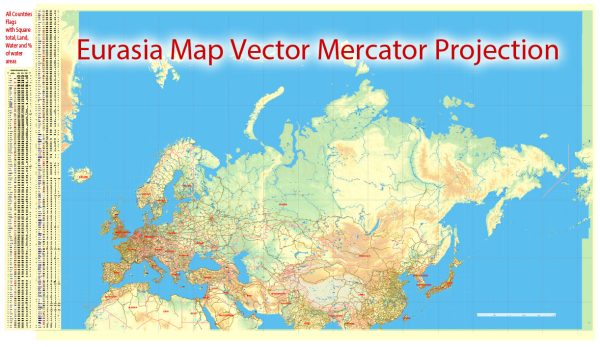Migration patterns between Europe and Asia have been significant throughout history, shaped by various factors such as economic opportunities, political instability, and cultural exchanges. It’s important to note that the term “great nations” can refer to different entities at different points in time, so I’ll provide a general overview.
- Historical Migrations:
- Silk Road: The ancient Silk Road facilitated cultural and economic exchanges between Europe and Asia. Merchants, scholars, and traders moved along this network, fostering connections between the two regions.
- Mongol Invasions: The Mongol invasions in the 13th century had a profound impact on both Europe and Asia, leading to increased interactions and exchanges.
- Colonial Period:
- European Colonization: European powers, particularly the British, Dutch, Portuguese, French, and Spanish, established colonies in Asia. This led to significant migration flows, with Europeans settling in Asia for trade, administration, and missionary activities.
- Asian Labor Migration: During the colonial period, there was also migration from Asia to Europe, often driven by economic factors. Asian laborers were recruited to work in various industries in European colonies.
- Post-World War II Era:
- Reconstruction and Labor Migration: After World War II, Europe needed to rebuild, and there was a demand for labor. This led to significant migration from Southern Europe (e.g., Italy, Greece, Spain, Portugal) to Western Europe. Additionally, some Asians moved to Europe for work opportunities.
- Contemporary Migration:
- Economic Migration: In recent decades, there has been a noticeable flow of migrants between Europe and Asia driven by economic factors. Skilled professionals often move for job opportunities, and students pursue education in both regions.
- Refugee Movements: Political instability and conflicts in parts of Asia have led to refugee movements to Europe. The Syrian refugee crisis, for example, saw a significant number of refugees seeking asylum in European countries.
- Cultural Exchanges: There is a continuous exchange of people for cultural and educational purposes. Many Asians pursue higher education in European institutions, contributing to a multicultural environment.
- Challenges and Opportunities:
- Integration Issues: Migration between Europe and Asia has not been without challenges, including issues related to integration, cultural differences, and sometimes, xenophobia.
- Economic Benefits: Migration has also brought economic benefits to both regions, as skilled workers contribute to innovation and economic growth.
In summary, the migration between Europe and Asia has been multifaceted, influenced by historical, economic, and political factors. It has shaped the demographics and cultures of both regions over time.


 Author: Kirill Shrayber, Ph.D.
Author: Kirill Shrayber, Ph.D.